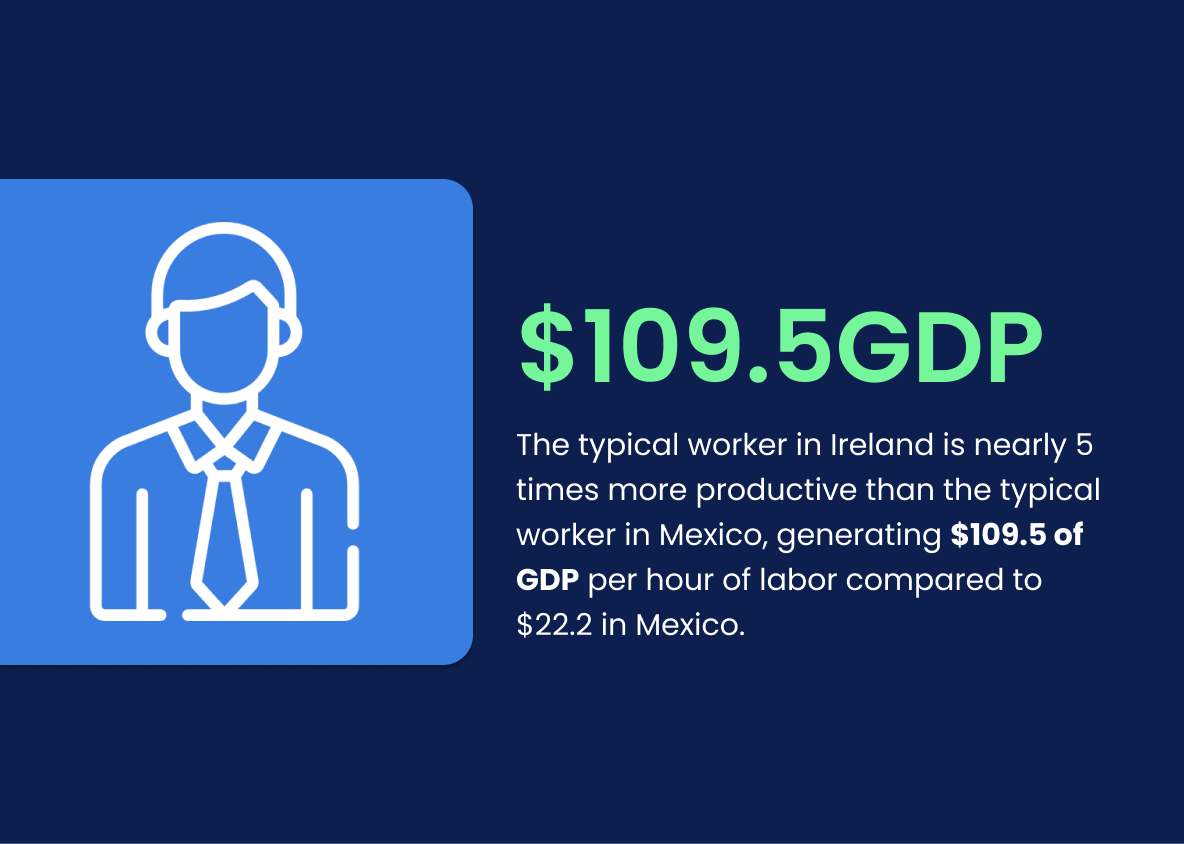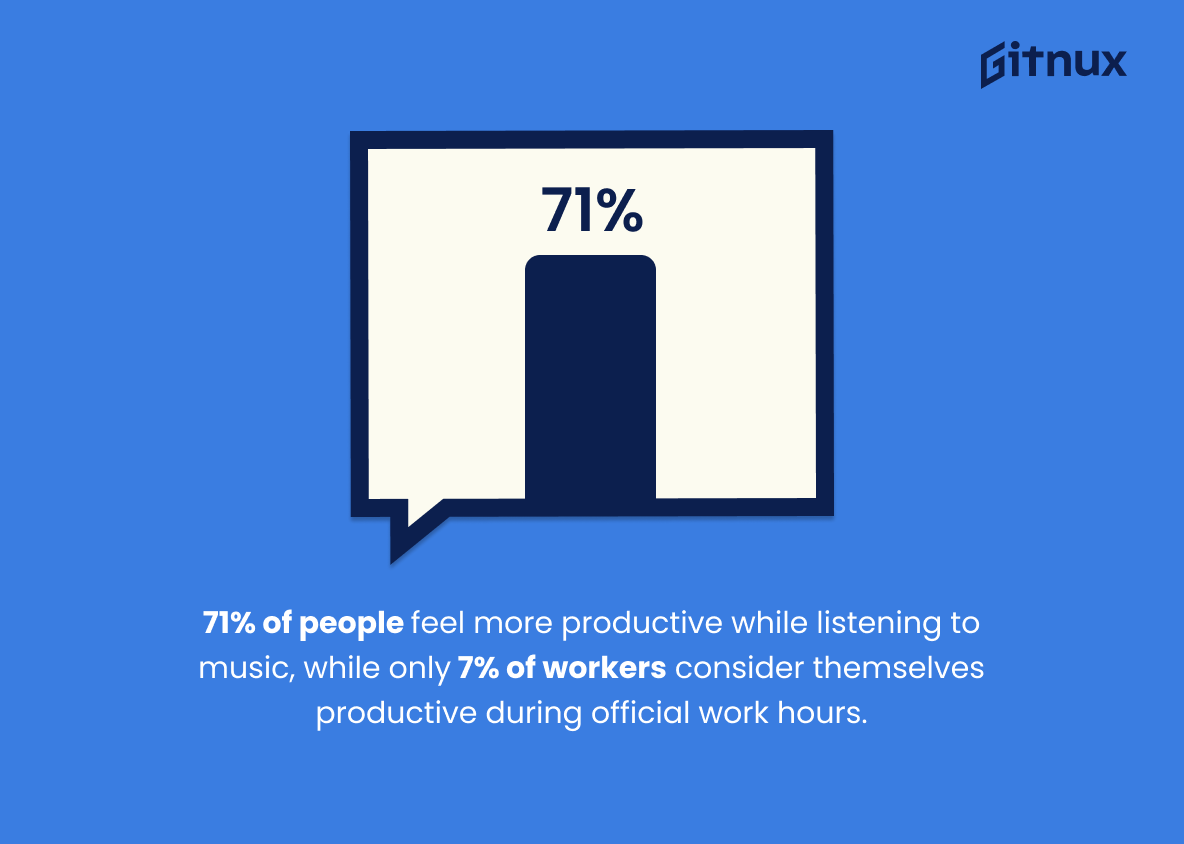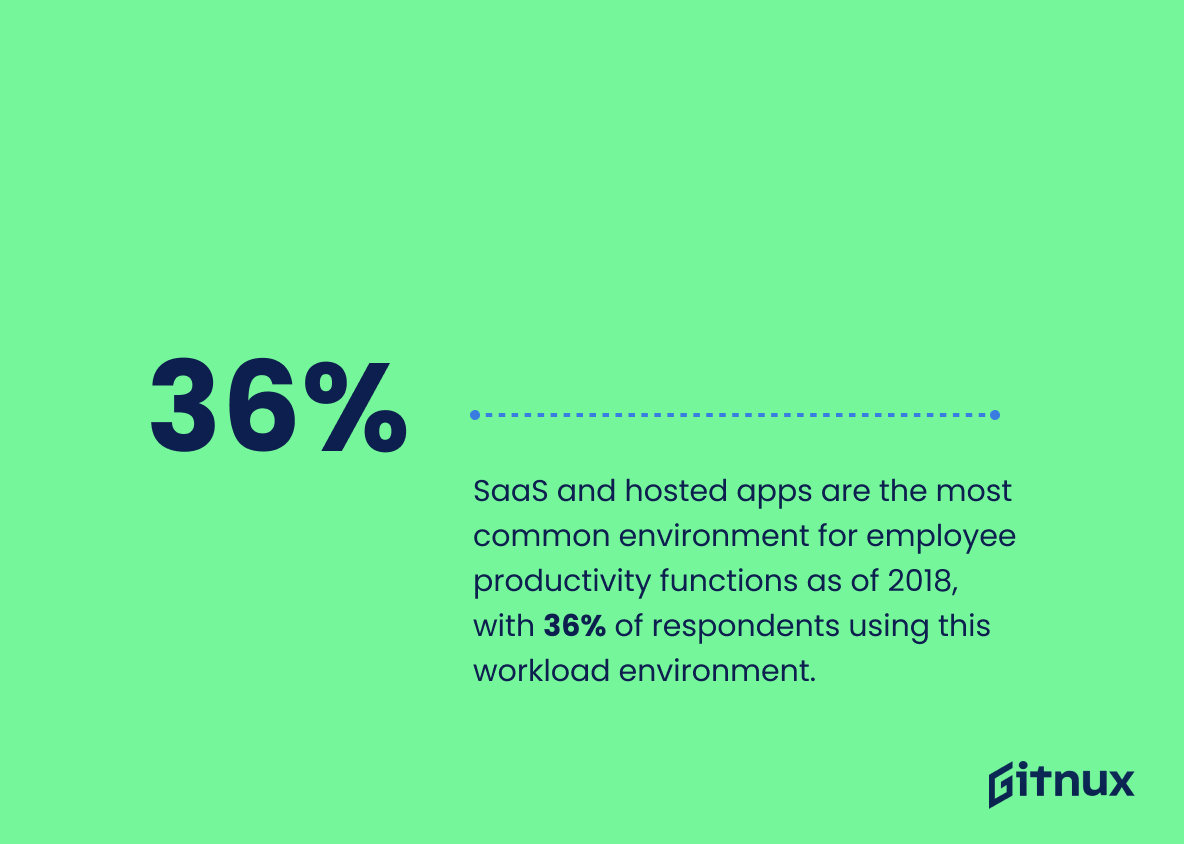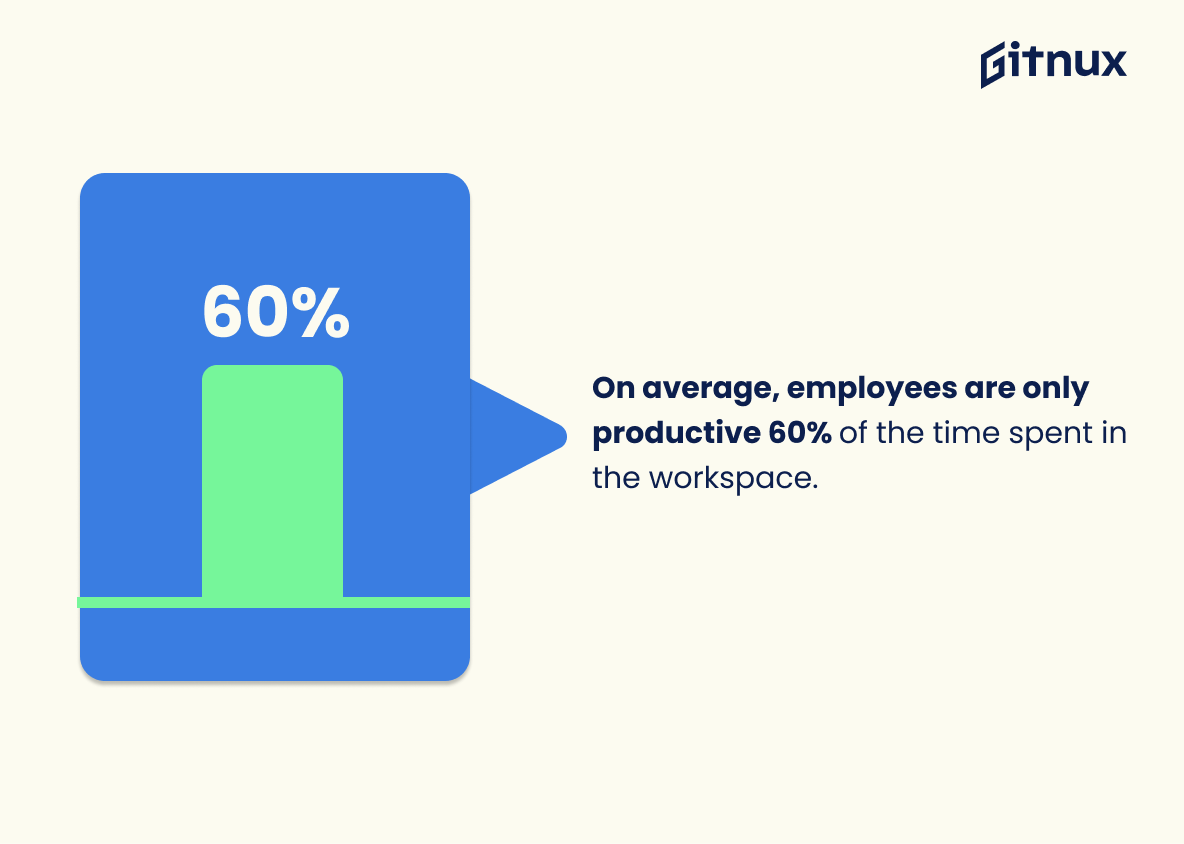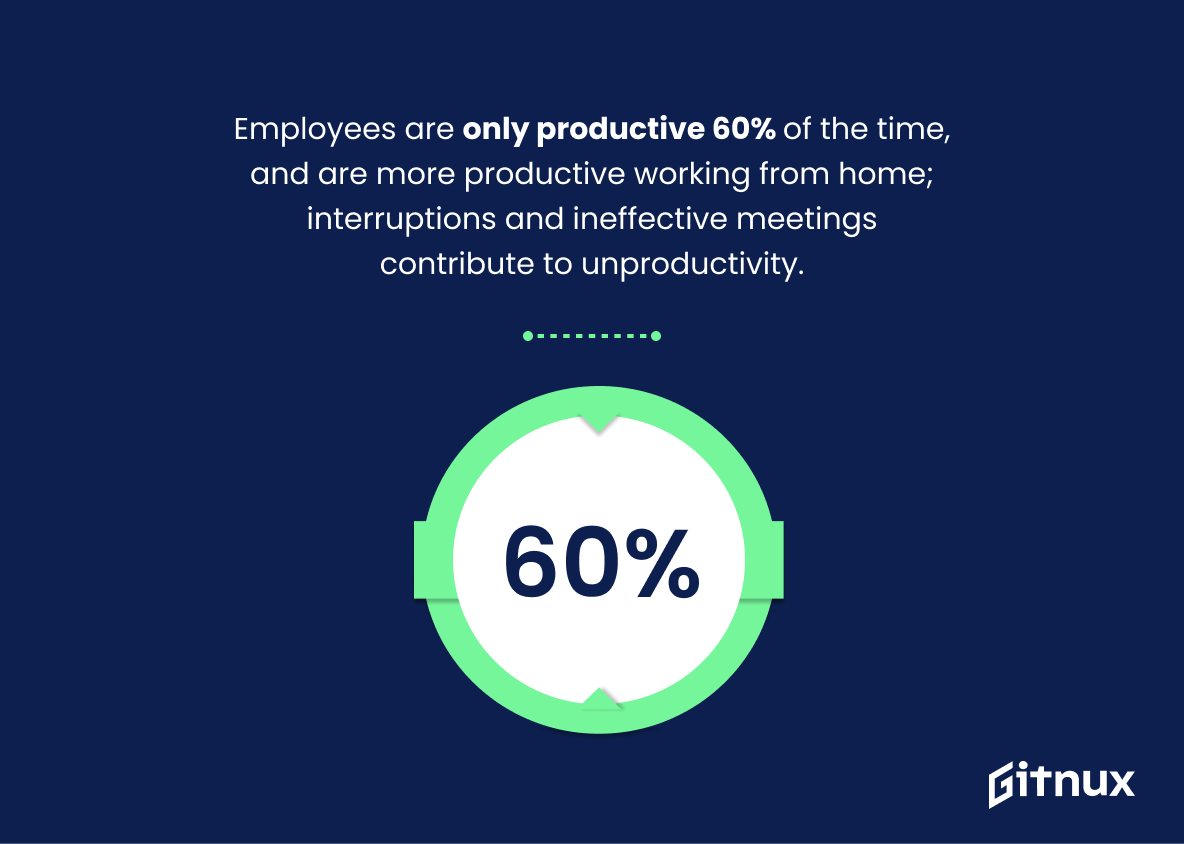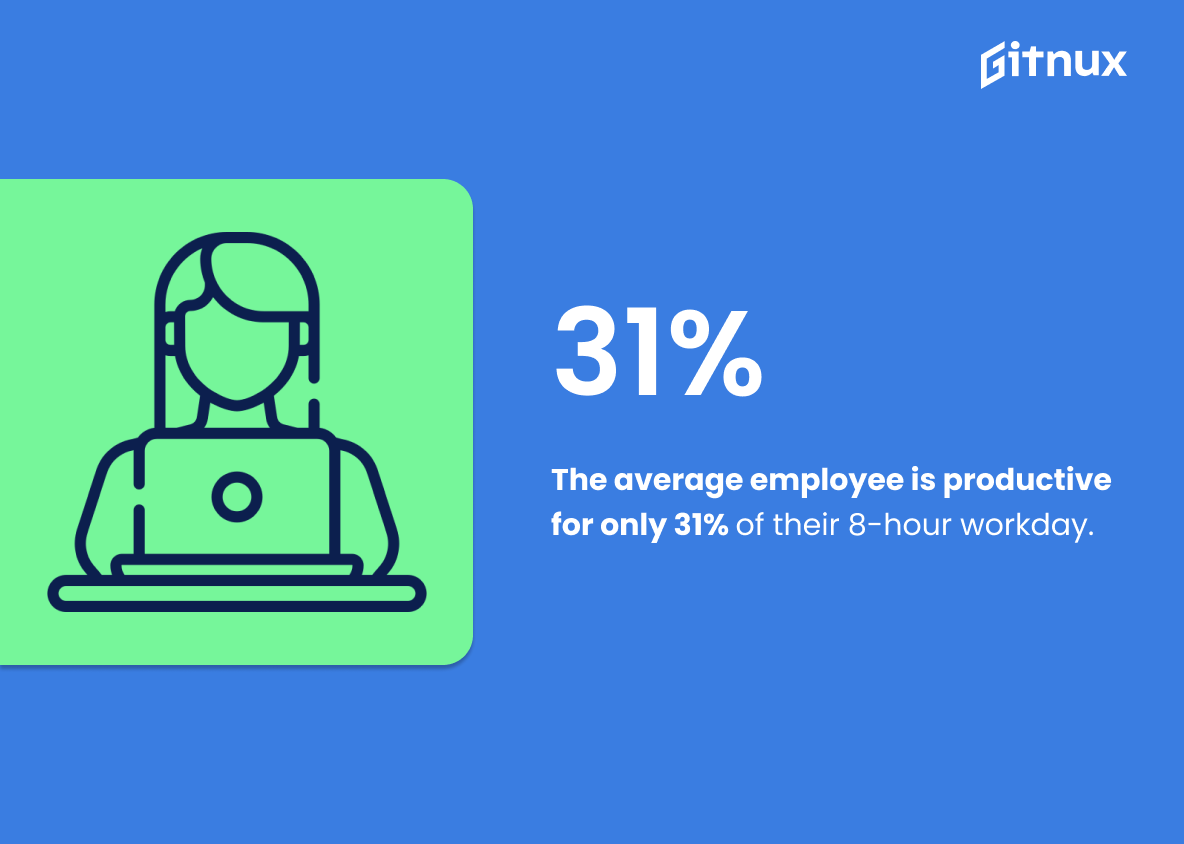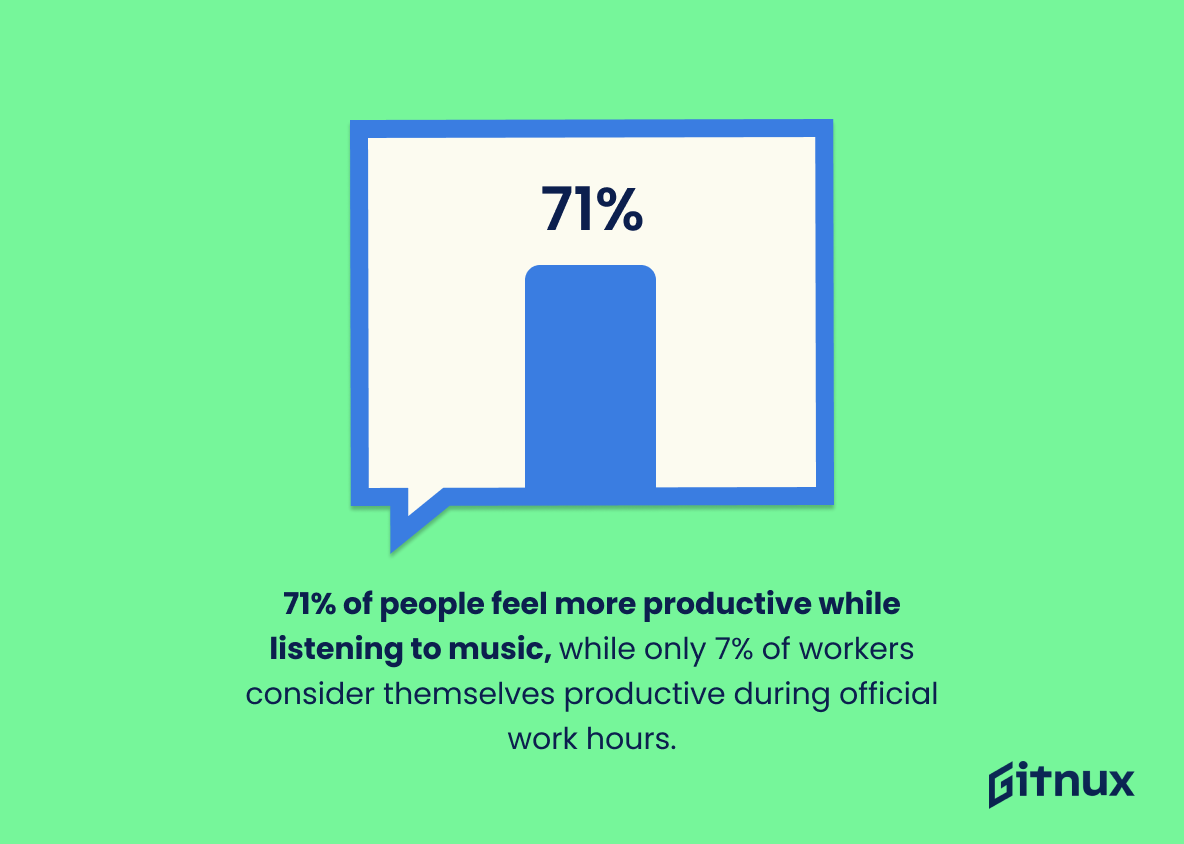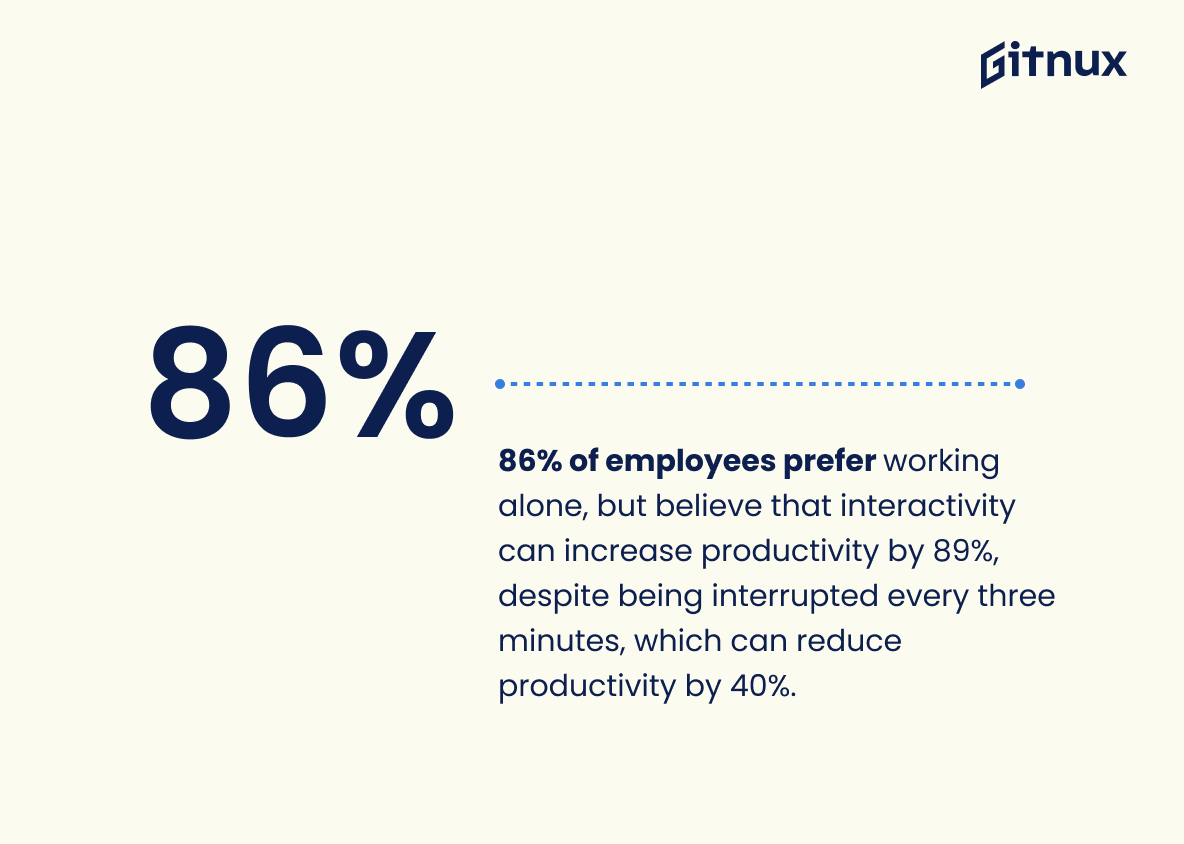Are you curious about how productive the average employee is? Do you want to know how you compare to the rest of the workforce? If so, then you’ve come to the right place.
In this blog post, we’ll be taking a look at the latest employee productivity statistics and what they mean to you. We’ll be exploring how employee productivity is measured, what factors influence it, and how you can use these statistics to improve your own productivity. So, let’s get started.
Average Employee Productivity: The Most Important Statistics
On average, employees are only productive 60% of the time spent in the workspace.
77% of remote workers show increased productivity, with 30% doing more work in less time and 24% doing more work in the same period of time.
Average Employee Productivity: Statistics Overview
The typical worker in Ireland is nearly 5 times more productive than the typical worker in Mexico, generating $109.5 of GDP per hour of labor compared to $22.2 in Mexico.
The significance of this statistic lies within the Average Employee Productivity Statistics framework as it underscores the variations in productivity levels across nations. This information can guide policymaking and investment strategies aimed at enhancing productivity in Mexico.
71% of people feel more productive while listening to music, while only 7% of workers consider themselves productive during official work hours.
The significance of this lies in its impact on the statistics of the average employee productivity, highlighting the potential of music to enhance productivity and revealing the prevalent lack of productivity among workers during their typical work hours.
Software as a Service (SaaS) and hosted apps are the most common environment for employee productivity functions as of 2018, with 36% of respondents using this workload environment.
The significance of this statistic lies in its relation to Average Employee Productivity Statistics. It highlights that cloud-based and hosted work settings are the prevalent environments for employee productivity functions. This fact can enhance employee productivity as it facilitates convenient access to data and applications.
On average, employees are only productive 60% of the time spent in the workspace.
The significance of this statistic lies in emphasizing the necessity for establishments to prioritize implementing measures that enhance their employees’ productivity. This can be achieved through a dedicated pursuit of excellence, astute allocation of resources, and shrewd business decisions, aimed at optimizing the efficiency of their workforce.
Employees are only productive 60% of the time, and are more productive working from home; interruptions and ineffective meetings contribute to unproductivity.
This statistic underscores the crucial role of establishing a productive work setting to enhance the employees’ efficiency. It further recommends that businesses should contemplate permitting remote work for their employees, as it can potentially boost productivity. Moreover, it stresses the imperative for companies to minimize interruptions and conduct productive meetings to maximize employee output.
The average employee is productive for only 31% of their 8-hour workday.
The significance of this figure lies in emphasizing the necessity for employers to discover methods to enhance employee productivity for the purpose of optimizing their workforce’s efficiency. Through comprehending the extent of employees’ actual productivity, employers can effectively distribute resources and devise tactics to augment employee productivity.
71% of people feel more productive while listening to music, while only 7% of workers consider themselves productive during official work hours.
The presented data indicates that music has the potential to enhance employee productivity. Furthermore, it underscores the significance of establishing a conducive workplace, given that merely 7% of workers perceive themselves as productive during regular working hours. This information holds relevance in the context of Average Employee Productivity Statistics, as it offers suggestions for employers to augment their staff’s efficiency.
Employees prefer to work alone 86% of the time Employees believe that interactivity may boost workplace productivity by 89%. Every three minutes, the average employee is interrupted. Multitasking has been shown to reduce productivity by 40%
The majority of employees prefer to work alone, despite the belief that interactivity can boost productivity in the workplace. Additionally, employees are frequently interrupted and multitasking has been shown to decrease productivity.
71% of employees who are recognized by their managers feel more engaged and motivated in the workplace.47% of HR leaders are not aware of employee skill gaps, and 60% of HR leaders say that building new skills and competencies will be their top performance management priority.
Half the workers receiving performance reviews, about 59%, feel that the manager is underprepared to provide the best, most actionable feedback during annual performance review sessions. It appears that employee recognition and skill development are important factors in engagement and motivation in the workplace. Many HR leaders are not aware of employee skill gaps and recognize the importance of building new skills, but performance reviews are often not effective in providing actionable feedback.
Employees who had control over their work environment, such as the ability to adjust lighting and temperature, were 17% more productive than those who did not. Employees in environments with natural elements, such as plants and water features, reported 15% higher levels of well-being. Happy employees were 12% more productive than unhappy employees.
It appears that giving employees control over their work environment and incorporating natural elements can have a positive impact on employee productivity and well-being. Additionally, employee happiness is strongly correlated with productivity, and it is important to address the factors that contribute to employee happiness in the workplace.
Statistics On Employee Productivity and Remote Work
On average, employees are only productive 60% of the time, and are more productive when working from home; interruptions and ineffective meetings contribute to unproductivity.
The significance of this data lies in its relevance to the Average Employee Productivity Statistics, as it emphasizes the need for fostering a productive work environment. Employers can identify and address the reasons behind low productivity, and implement necessary modifications to boost employee efficiency and profitability.
77% of remote workers show increased productivity, with 30% doing more work in less time and 24% doing more work in the same period of time.
The significance of this data lies in the fact that remote work can serve as a successful method to enhance employee productivity. Hence, organizations should contemplate on granting their staff the option to work from a distance, given that it may result in heightened efficiency and output.
Working from home can increase employee productivity by up to 13%.
The significance of this statistic lies in its indication that remote work arrangements can enhance employee productivity. This finding assumes particular relevance in the realm of Average Employee Productivity Statistics, as it highlights how such arrangements can contribute towards bolstering productivity levels across the board.
32.2% of managers reported an increase in productivity following the 2020 shift to remote work.
The significance of this data lies in its demonstration of the potential of remote work to enhance employee efficiency and the opportunity for employers to fine-tune their tactics for optimal productivity in the long run.
On average, working from home has increased worker productivity in the U.S. by 13%, and overall productivity has increased by 5% since the start of the pandemic.
The significance of this figure lies in its demonstration of the advantages of remote work in enhancing employee output. This holds particular significance amidst the pandemic, given the restriction on office-based work. Recognizing the constructive influence of working from home, organizations can modify their policies to optimize employee efficiency.
Supplementary Statistics
In the US, the average employee productivity increased at an annual rate of 1.0% between 1997 and 2019.
This is an important indicator of the health of the US economy, and provides valuable insight into the effectiveness of the strategies employed by businesses to maximize their output. As such, it is an essential statistic to consider when discussing average employee productivity.
The productivity level of employees working in the manufacturing sector increased by 7.8% in the US between 2017 and 2021.
Their efforts have been rewarded with a 7.8% increase in productivity over the past four years. This is an impressive achievement and serves as an example of how employees can make a difference in their workplace. It also provides valuable insight into the current state of employee productivity in the US, which can be used to inform future decisions and strategies.
In a typical eight-hour workday, the average employee is only productive for 2 hours and 53 minutes.
This highlights the need for employers to take steps to ensure their employees are able to maximize their productivity during the workday. It also serves as a warning to employees that they should be mindful of how they are spending their time at work and strive to make the most of their time.
The UK’s Office for National Statistics found that productivity levels dropped by 2% in Q2 of 2020.
Despite the best efforts of employees, the current climate has made it difficult to maintain the same levels of productivity as before. This statistic is a valuable insight into the current state of employee productivity and can be used to inform strategies for improving productivity in the future.
Telecommuting employees tend to be 22% more productive than their in-office counterparts.
Allowing employees to work remotely can be a great way to boost productivity, and could be a valuable tool for businesses looking to maximize their output. As such, it is an important statistic to consider when discussing average employee productivity statistics.
75% of employees who work remotely at least once a week reported improved productivity levels.
Allowing employees to work remotely at least once a week can lead to improved productivity levels, which is an important factor in any organization’s success. As such, it is an invaluable piece of information for any blog post about Average Employee Productivity Statistics.
Employees with a clean and organized office space are 70% more productive than those with cluttered workspaces.
A tidy office environment can have a significant impact on an employee’s ability to work efficiently and effectively. This statistic is especially relevant in a blog post about Average Employee Productivity Statistics, as it provides a tangible example of how a simple change in the workplace can lead to improved productivity.
69% of employees reported increased productivity levels when their office space is noise-controlled.
Creating a quiet environment can have a significant positive effect on the output of employees, making it an important factor to consider when looking to maximize productivity.
The average employee checks their computer 37 times an hour, significantly affecting productivity.
This highlights the need for employers to be aware of the potential for employees to become distracted by their devices, and to take steps to ensure that productivity is not adversely affected.
Employees who take short breaks throughout the workday are 11% more productive than those who don’t.
Taking short breaks can have a significant impact on employee productivity, and should not be overlooked. This statistic can be used to encourage employers to provide their employees with the opportunity to take regular breaks, as it could lead to an increase in overall productivity. Additionally, this statistic can be used to encourage employees to take regular breaks, as it demonstrates the positive impact that taking breaks can have on their productivity.
The average office worker only works for 1.5 hours in a typical 8-hour workday due to distractions and unproductive activities.
This highlights the need for employers to take proactive steps to ensure that their employees are able to stay focused and productive throughout the day. It also serves as a warning to employees that they should be mindful of their own distractions and unproductive activities, as these can have a significant impact on their overall productivity.
40% of employee productivity loss is attributed to task-switching or multitasking.
There is a need for employers to be aware of the potential for decreased productivity when employees are asked to switch between tasks or multitask. This statistic is a reminder that employers should strive to create an environment that encourages employees to focus on one task at a time in order to maximize productivity.
Companies that encourage regular social interactions among employees see an average 12% increase in productivity.
Fostering a collaborative and supportive environment can lead to a significant boost in productivity, making it an invaluable asset for any organization. By highlighting this statistic in a blog post about Average Employee Productivity Statistics, readers can gain a better understanding of the importance of social interactions in the workplace and how it can be leveraged to increase productivity.
A Gallup study reported a 10% increase in productivity among engaged employees, with a 21% increase in profitability as a result.
When employees are engaged, they are more productive and the company reaps the rewards in terms of increased profitability. This is an important point to consider when discussing average employee productivity statistics, as it highlights the importance of creating an environment where employees feel valued and engaged.
The average employee has experienced a 3% decline in productivity due to the lack of training and professional development opportunities.
Without these resources, employees are unable to reach their full potential, leading to a decrease in productivity. This statistic highlights the need for employers to invest in their employees and provide them with the necessary tools to succeed.
Conclusion
In conclusion, employee productivity is an important factor in the success of any business. By understanding the average employee productivity statistics, businesses can better understand how to optimize their workforce and maximize their profits.
By utilizing the data available, businesses can make informed decisions that will lead to increased efficiency and higher profits.
References
Statista: “How Productive is an Hour of Work?”, cited February 2023. (Source)
Clockify: “Workplace productivity statistics for 2022”, cited February 2023. (Source)
Apollotechnical: “15 EMPLOYEE PRODUCTIVITY STATISTICS YOU WANT TO KNOW”, cited February 2023. (Source)
Statista: “Primary environment for workloads for employee productivity functions in organizations worldwide in 2018 and 2020”, cited February 2023. (Source)
Teamstage: “Productivity Statistics: Key Elements in 2022”, cited February 2023. (Source)
Applauz: “12 Shocking Employee Productivity Statistics”, cited February 2023. (Source)
Formstack: “Workplace Productivity Statistics That Will Blow Your Mind”, cited February 2023. (Source)
Apollotechnical: “SURPRISING WORKING FROM HOME PRODUCTIVITY STATISTICS (2023)”, cited February 2023. (Source)
Biz30.timedoctor: “8 work from home productivity statistics for the outsourcing industry”, cited February 2023. (Source)
Dataprot: “Remote Work Statistics: A Glance at the New Normal”, cited February 2023. (Source)
Zippia: “22 MUST-KNOW WORKING FROM HOME PRODUCTIVITY STATISTICS [2023]: HOW DOES REMOTE WORK AFFECT OUR PRODUCTIVITY?”, cited February 2023. (Source)
Business2community: “15 Surprising Employee Productivity Statistics That Will Impress You”, cited February 2023. (Source)
Blog.darwinbox: “35 Performance Management Statistics Every HR Leader Should Know”, cited February 2023. (Source)
Sydney.edu: “Shaping the workplace for wellbeing and productivity”, cited February 2023. (Source)
